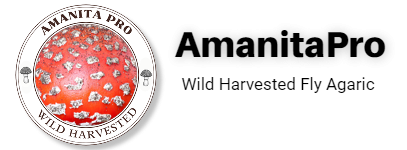The Fly Agaric mushroom, with its distinctive red cap and white spots, is not only an iconic symbol of the forest but also holds a significant place in folklore and mythology. Throughout history, various cultures have attributed mystical properties to this intriguing fungus. Its presence can be traced back to ancient civilizations, where it was believed to possess supernatural abilities.

One of the most well-known associations of the Fly Agaric mushroom in folklore comes from Siberia. The indigenous peoples of this region revered the mushroom for its mind-altering effects when consumed. It was used by shamanistic tribes during religious rituals as a means to communicate with the spirit world and gain insight into important matters concerning their community. Some even believe that the concept of Santa Claus finds its roots in these ancient practices, as shamans would dress in red and white garments similar to those worn by modern-day Santa Claus while consuming these mushrooms during winter solstice celebrations.
In Norse mythology, it is said that Odin, the god of wisdom and war, gained his immense knowledge by consuming Fly Agaric mushrooms. Similarly, Viking warriors were known as “berserkers” due to their ferocious behavior on battlefields; some historians speculate that they may have ingested these mushrooms before going into battle to induce a heightened state of aggression.
Fly Agaric mushrooms also feature prominently in European folklore relating to fairies and magical creatures. In Celtic traditions, they are often depicted growing near fairy rings – circles formed by naturally occurring fungi – which are believed to be portals between our world and that inhabited by fairies or elves.
In Alice’s Adventures in Wonderland by Lewis Carroll (1865), Alice encounters a peculiar caterpillar sitting upon a large mushroom smoking hookah; when she eats pieces from different sides of this mushroom she experiences drastic changes in size from very small or very tall like giant size depending on which side she consumes making her question her reality around her growing/shrinking size. This famous literary reference could be seen as a nod to the Fly Agaric mushroom’s hallucinogenic properties and the potential for it to alter perceptions of reality.
These examples illustrate just a few of the many ways in which the Fly Agaric mushroom has permeated folklore and mythology across different cultures throughout history. Its continued presence in our collective imagination speaks to the enduring fascination with this unique fungus and its mysterious effects on those who consume it. As we delve deeper into understanding its properties, we may uncover even more connections between this intriguing organism and our shared cultural heritage.
